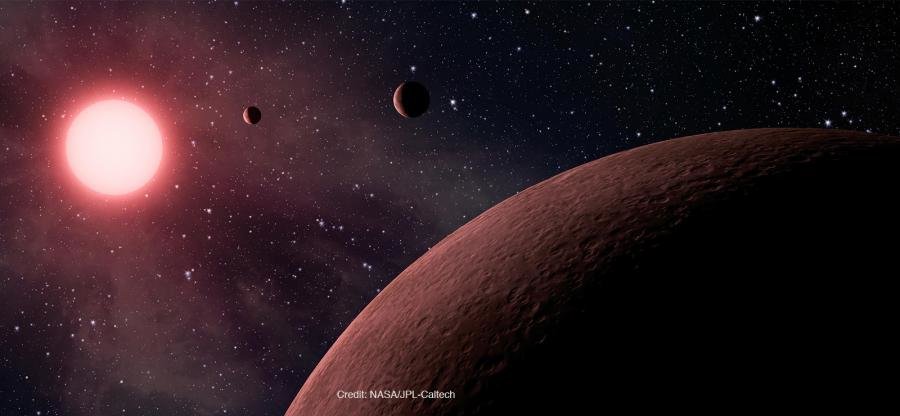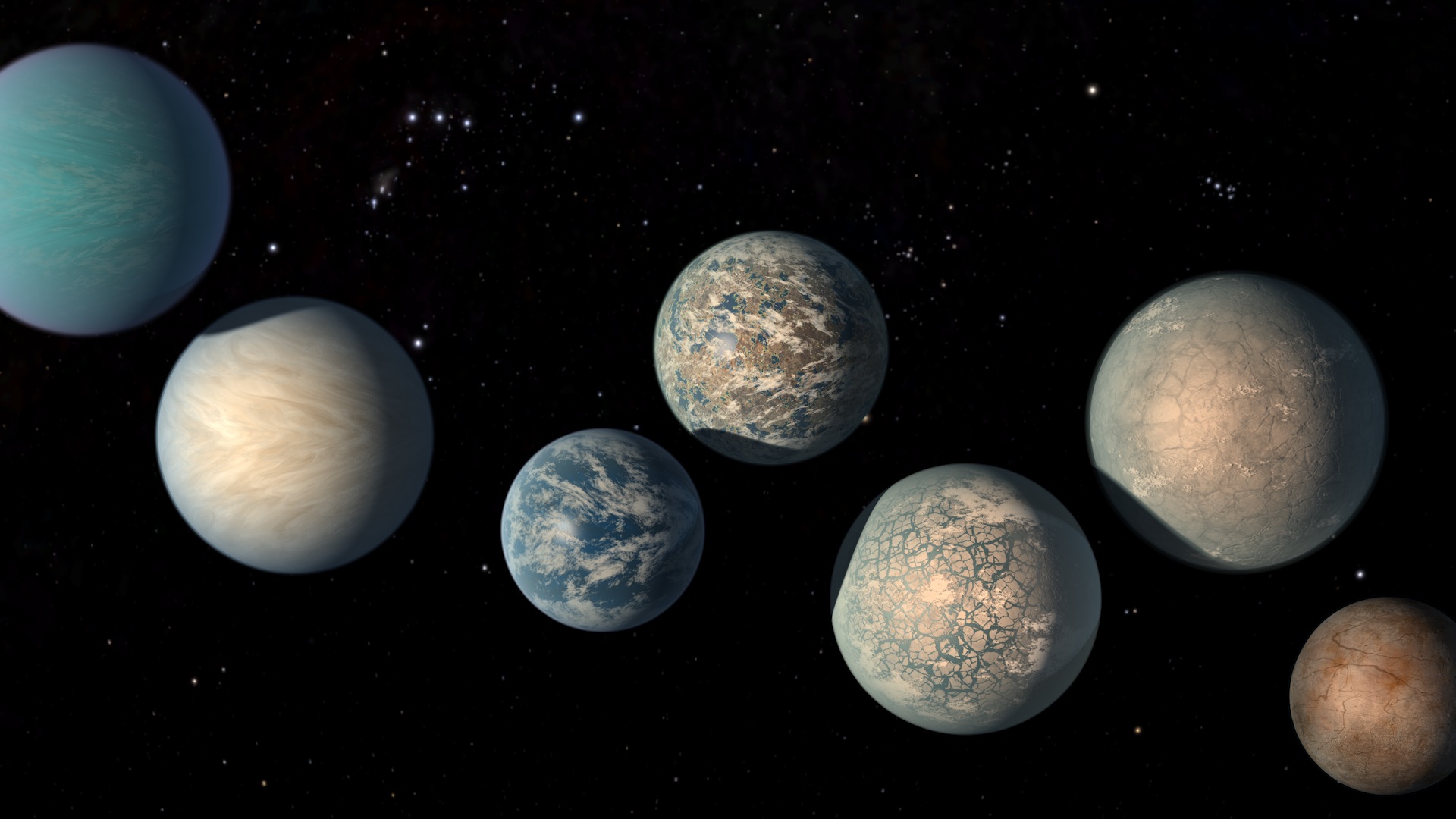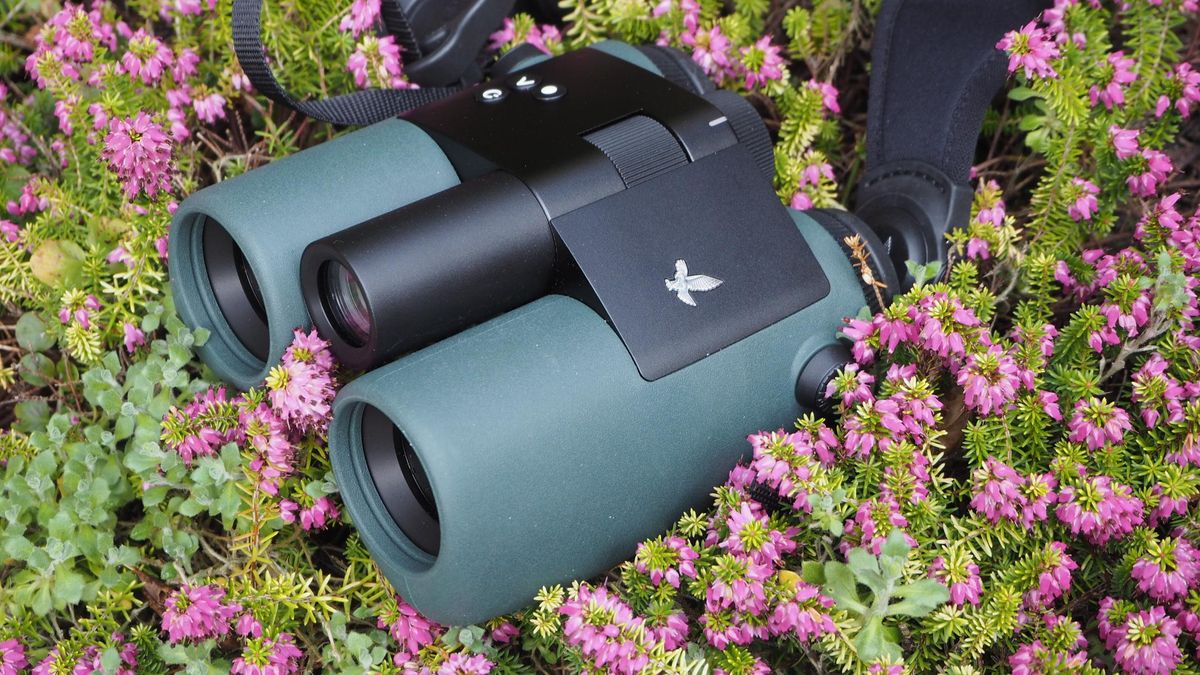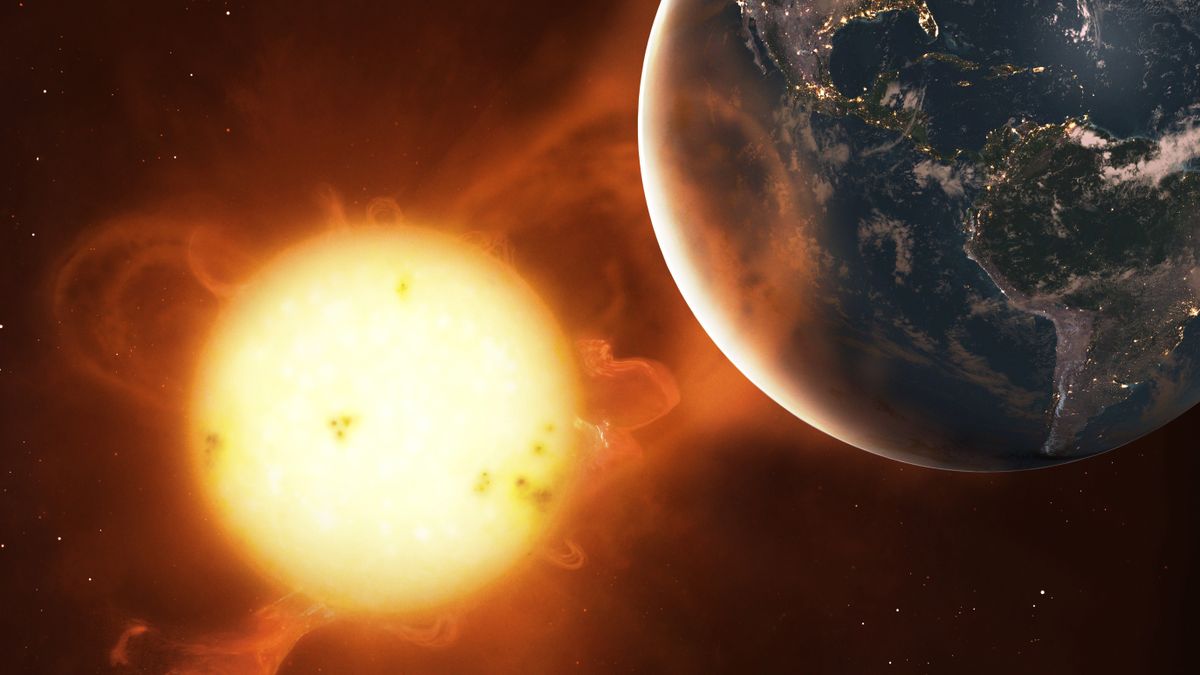A team of scientists is developing a "quantum-sensitive" device that could capture direct images of Earth-like exoplanets — something astronomers tend to consider so difficult it's nearly impossible.
Humanity's ability to image the heavens has improved by leaps and bounds since the invention of the telescope in 1608. Although the earliest of these images were far from clear, astronomers from generations ago could already observe craters on our moon, identify four of Jupiter's moons, and reveal a diffuse ribbon of light arching across the sky — what we now know represents the Milky Way's structure.
But modern telescopes, like the James Webb Space Telescope (JWST), have really brought the field forward. For instance, telescopes these days rely on very sophisticated instruments called coronagraphs to observe light coming from objects orbiting bright stars. "Current leading coronagraphs, such as the vortex and PIAA coronagraphs, are ingenious designs," Nico Deshler, a Ph.D. student at the University of Arizona and co-author of the new study, told Space.com.
"A coronagraph is an instrument used in astronomy to block or suppress the light coming from a very bright object, like a star, to reveal fainter objects surrounding it." This allows scientists to detect objects more than a billion times fainter than the stars they orbit.
However, Deshler and his colleagues believe they can push coronagraphs further to capture direct images of distant worlds. "Our team is broadly interested in the fundamental limits of sensing and metrology imposed by quantum mechanics, particularly in the context of imaging applications," Itay Ozer, a Ph.D. student at the University of Maryland and another of the study’s co-authors, told Space.com.
The idea is to use principles of quantum mechanics to surpass the resolution limits of current telescopes, allowing scientists to image objects smaller or closer together than what traditional optics would permit.
"The resolution of a telescope generally describes the smallest feature that the telescope can faithfully capture," said Ozer. "This smallest length scale, dubbed the 'diffraction limit,' is related to the wavelength of the detected light divided by the diameter of the telescope."
This means gaining higher resolution requires building larger telescopes. However, launching a telescope large enough to surpass the diffraction limit necessary to directly image an exoplanet poses different types of challenges: high launch costs and extreme engineering complexity.
"In this regard, developing sub-diffraction imaging methods is an important pursuit because it allows us to expand the domain of accessible exoplanets given the challenges and constraints associated with space-based observation," added Deshler. "We were inspired to explore the implications of these newfound quantum information-theoretic limits in the context of sub-diffraction exoplanet imaging where many Earth-like exoplanets are suspected to reside."
The team thus designed a "quantum-level" coronagraph that can sort the light collected by a telescope and isolate the faint signal from exoplanets — light that is usually overwhelmed by the glare of their host stars.
The concept relies on the fact that photons, or particles of light, travel in different patterns known as spatial modes. "In astronomical imaging, the position of each light source in the field of view of a telescope excites different optical spatial modes," explained Ozer.
By using an optical device called a "spatial mode sorter," which is a cascade of carefully designed diffractive phase masks, the team was able to separate the incoming light, allowing them to isolate photons coming specifically from the exoplanet below the sub-diffraction limit. "As light interacts with each mask and propagates downstream through the mode sorter," said Deshler, "the optical field interferes with itself in such a way that the photons in each spatial mode get physically routed to different non-overlapping regions of space."
"The correspondence between the positions of light sources and their corresponding excited spatial modes is central to […] nulling of starlight and detection of exoplanets," added Ozer. "In this way, we are able to siphon the photons emitted by the star away from the photons emitted by the exoplanet."

This goes beyond digitally processing an image and subtracts starlight after the fact — in other words, it removes starlight in the optical domain before the light even reaches a detector. "In exoplanet searches, a telescope is rotated to point directly at a prospective star, which we model as a point source of light," explained Deshler. "Under this alignment between the star and the telescope axis, all the photons emanating from the star couple to the [telescope’s] fundamental mode — the specific spatial mode that is excited when looking at an on-axis point source."
Under this alignment, all the photons emanating from the star couple to the fundamental mode. By filtering out this mode, Deshler, Ozer and their colleagues were able to effectively eliminate the starlight, revealing only the light from the exoplanet.
"The exoplanet's light is misaligned to the telescope axis, and excites a different spatial mode from the star,” said Ozer. "Our method preserves as much of the pristine uncontaminated photons from the exoplanet as possible, which turn out to carry all the available information."
In the lab, the team set out to show that their device could detect exoplanets positioned extremely close to their host stars — closer than traditional resolution limits allow. They tested it using two points of light: a bright one to represent the star and a much dimmer one to simulate an exoplanet. By gradually moving the dimmer light and recording the resulting images, they assessed how well the device could localize the exoplanet.
They found that when the artificial exoplanet was very close to the star — less than one-tenth the separation limit of current telescopes — most of its photons were filtered out along with the starlight. At larger separations, however, the exoplanet's signal became clearer, rising above background noise and aligning with theoretical predictions.
Additionally, by setting the star to be 1,000 times brighter than the planet and analyzing the images with a maximum likelihood estimator, the team achieved results within a few percent of the theoretical limit across a wide range of sub-diffraction planet positions.
"This is a proof-of-principle demonstration that spatial mode sorting coronagraphs may provide access to deeply sub-diffraction exoplanets which lie beyond reach for current state-of-the-art systems," said Deshler. "We are hopeful that this method might allow astronomers to push the boundaries of exoplanets accessible with direct imaging."
The team says the technology needed to build and implement their quantum-optimized coronagraph already exists. They're now working to refine the device into a deployable system that meets performance targets.
"The main limitation is the fidelity of the mode sorter," explained Ozer. "In the lab, we measure the 'purity' of the modes through a metric called the cross-talk matrix, which describes the undesired photon leakage that occurs between independent modes. Cross-talk is largely induced by manufacturing imperfections and small experimental misalignments. To successfully image Exo-Earths, […] the mode sorter must isolate each photon in the fundamental mode to better than one part in a billion if the exoplanet is to be resolved."
The team says precision manufacturing is necessary to fabricate high-quality phase masks that can meet these "cross-talk" requirements. "We envision the use of advanced techniques, such as photolithography, additive manufacturing, or micromachining, to construct extremely precise diffractive surfaces," Deshler said.
The duo hopes this technology will one day provide complementary data for future flagship telescope missions like the Habitable Worlds Observatory, a proposed successor to the Hubble Space Telescope, the JWST, and the Nancy Grace Roman Space Telescope.
"Direct imaging is one of the few observation strategies that can measure the wavelength spectrum of an exoplanet," explained Ozer. "In turn this spectrum may contain clues about atmospheric composition of an exoplanet and reveal potential chemical biosignatures."
"We imagine that mode-sorter driven coronagraphs could augment the astronomy toolkit and enable better characterization of sub-diffraction exoplanets," added Deshler. "However, the difficulty of exoplanet discovery warrants cross-validation with a multiplicity of observational techniques such as transits, velocimetry, and gravitational microlensing. Therefore, this technology is by no means a one-size-fits-all solution."
The study was published on April 22 in the journal Optica.
.png)
 German (DE)
German (DE)  English (US)
English (US)  Spanish (ES)
Spanish (ES)  French (FR)
French (FR)  Hindi (IN)
Hindi (IN)  Italian (IT)
Italian (IT)  Russian (RU)
Russian (RU) 









Comments